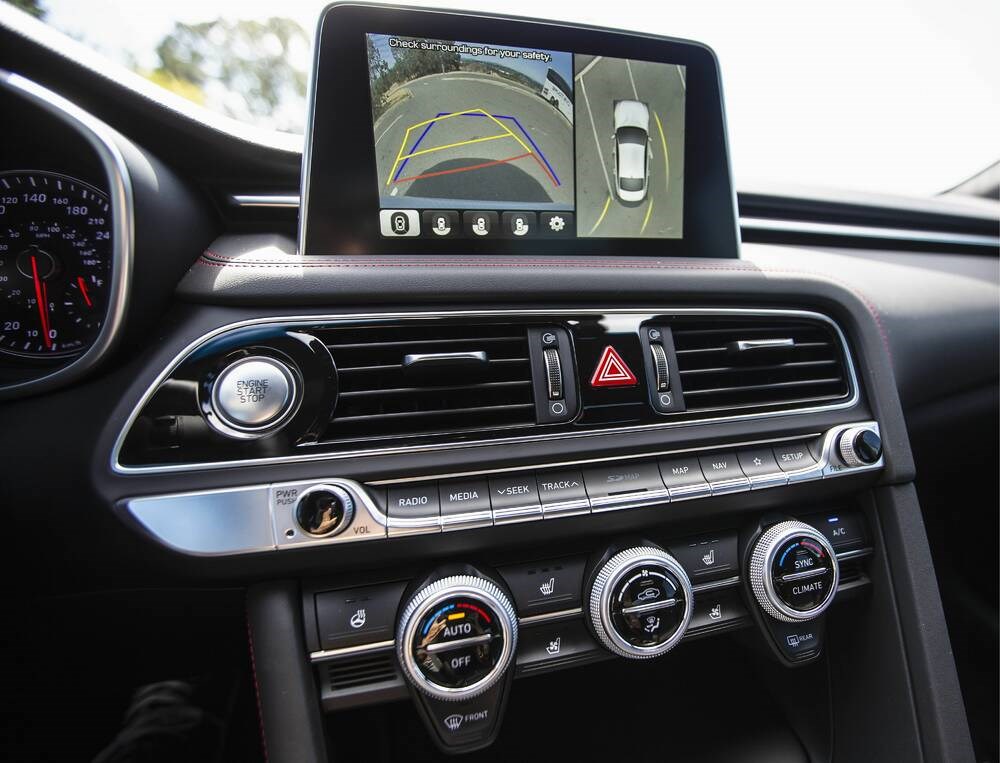
All this tech today is great, right? Isn’t it great when the auto terminal at the grocery store can’t scan your item or when that internet link on the computer takes you exactly nowhere. Isn’t it wonderful how that new (insert your government ministry) portal or app has simplified your life? Don’t you just love endless automated telephone answering trees? I stopped going to the cinema when the seat selector screen at the door would only allow me to pick a seat immediately next to someone even though the rest of the row was wide open.
This tech-at-all-costs mindset within the automotive industry is causing more blowback as researchers are discovering that just because you can layer on the tech, it doesn’t mean that you should, especially as it pertains to driver safety.
Look inside some brand new cars. You’ll see the embracing of sleek, minimalist interiors, which I would actually describe as barren, dominated by large touchscreens resembling something from an arcade. While these designs might look futuristic and align with modern aesthetics, they have introduced a host of safety concerns.
Driver distraction is one of the leading causes of injury and death on our roads and touchscreens by their nature require drivers to take their eyes off the road to interact with their controls. “Eyes-off-road” time is the critical factor in distracted driving accidents.
A study conducted by Sweden’s Vi Bilägare magazine in 2022 highlighted the problem. It showed that performing basic tasks — like adjusting climate controls or changing the radio station — took significantly longer on a touchscreen compared to physical buttons. Adjusting the air conditioning took 10 seconds longer on a touchscreen. Changing radio stations often required navigating through multiple menus, increasing a person’s cognitive load. At 50 km/h, even a few seconds of distraction means travelling dozens of metres without full attention on the road.
We are tactile beings. Aside from seeing what’s in front of us, we conquer simple tasks by touching things. Physical buttons offer something touchscreens simply cannot – tactile feedback. We can feel for buttons and knobs without looking, using muscle memory to operate them. This allows drivers to keep their eyes on the road while making adjustments. Touchscreens, by their very nature, are flat and smooth, requiring you to visually locate then interact with specific areas on the screen. Without tactile feedback, even things which were simple in your 1998 Corolla, like turning up the volume or defrosting windows, becomes more distracting and time-consuming.
A pundit I listened to recently said that tech is still failing humankind at a basic level. According to her, when we can operate a computer or any other high tech device just like a toaster, then tech will have succeeded. To me, that totally applies to driving.
Many modern vehicles now require drivers to navigate through multiple layers of menus to adjust climate controls, use the windshield wipers or turn on seat heaters. This again increases cognitive load, forcing drivers to divide their attention between operating the touchscreen and the road. In pressure filled situations, such as driving in heavy rain or navigating through dense traffic, this added intricacy can lead to dangerous lapses in attention.
Touchscreens are just like printers. They work well in ideal conditions, but in the real world, they often don’t. Glare from sunlight can make screens difficult to read. Smudges and fingerprints can obscure critical information — always right when you need it. And like all computers, software glitches or lag can render touchscreens unresponsive at crucial moments.
For me, physical buttons and levers will always be far more reliable. They work consistently regardless of lighting conditions or software performance. Like the invention of the wheel itself, you might be able to improve it with the occasional tweak, but that basic design is inviolate.
Automotive high tech today is unavoidable. But it also introduces serious safety concerns that shouldn’t be ignored. Increased driver distraction, lack of tactile feedback, complex menus, and real-world usability challenges all tell me that buttons and knobs still have an important role to play in vehicle design.
Glove Box: Paul emailed last week about obstructed driver vision related to handicapped signs hanging from rear view mirrors. Some of these signs are much larger than others — large enough in some cases to run afoul of division 7.05(2) of B.C.’s motor vehicle regulations: “No person shall drive or operate a vehicle on a highway while his view of the highway or of any intersecting highway is unduly obstructed by any windshield sticker, sign, poster or other thing or material placed over or affixed to the windshield or any window of the vehicle.” Perhaps it’s time to consider a smaller credit card style sign — like a parking pass — which tucks into the corner of the windshield.
[email protected]
